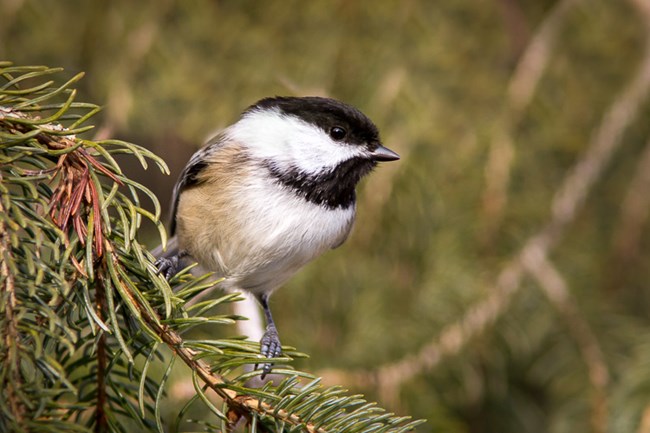
IntroductionWhen temperatures drop and the days get short, black-capped chickadees have little time to find enough food when their energy demand is high and days are short. Fortunately, these charming little birds with their cheery calls have a number of adaptations that help them through the long, chilly nights of winter. Unlike many birds they forage among the twigs not only upright, but also upside down. Even tiny insect eggs hiding in a crack on the underside of a branch are not safe from the chickadee’s sharp eyesight and probing bill. Chickadees also feed readily at birdfeeders where they test each sunflower seed to see which are the plumpest. Empty shells are discarded before they are opened so the bird can maximize the number of calories consumed with the fewest expended. They also have two techniques to conserve calories on cold winter nights. First, they seek a sheltered roost. Roosts in dense pine boughs not only exclude predators, but are slightly warmer than the air temperature. Second, once settled for the night, their body temperature slowly drops from their normal 108 degrees to just 86 degrees. This reduces the number of calories needed to survive the cold night. Fascinating Facts
Identification
| |
Last updated: October 8, 2021
